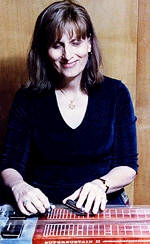We’ve gotten a lot (actually, three) requests for a “media kit” from potential advertisers recently. We don’t actually have such a thing because we don’t actively look for advertising (the Lincoln Center folks and a couple of record companies sometimes contact me when they want to promote something and I charge them a few bucks–if I remember to send an invoice). Sequenza21 is my hobby, my love and–thanks to all you nice folks who create an enormous amount of entertaining content in your comments, posts and forums–it is a remarkably inexpensive and low maintenance undertaking.
It occurs to me, though, that if we were a little more active in looking for sponsors or advertisers we might be able to do a few more things as a community–more S21 concerts, for example, perhaps in other cities or maybe a commissioning fund. Maybe we could team up with a performing group. (How about the Sequenza21 All-Stars?)
So, here’s our media kit. We get about 30,000 unique visitors a month and 60,000 page views–nearly all of them musicians or composers. In terms of influence, we rank near the top (Alex Ross) in the Technorati “classical music” rankings. We have an extremely loyal following–more than 70% of the people who come here are returning visitors.
We charge $150 a month for up to 145×145 pixels ad and $250 a month for a 145×290 pixels ad in the right sidebar.
If you’d like to become a $1,000 a year sponsor, you can have a
permanent 145×145 pixel ad (which you can change as often as you like); $1,500 gets you a permanent 145×190 ad for 12 months. $2,500 gets you that–plus a blog@sequenza21 that you get to write yourself.
Of course, if you’re a regular and have no funding I’m happy to help you promote your project free. I owe you nice folks more than you know.
 This Mother’s Day, show her you care. Nothing says “Thanks Mom” like a high-octane concert of Lachenmann, Ades, Nono, Alex Mincek, and Kyle Hillbrand. And — just your luck — such a beast is roaring our way with
This Mother’s Day, show her you care. Nothing says “Thanks Mom” like a high-octane concert of Lachenmann, Ades, Nono, Alex Mincek, and Kyle Hillbrand. And — just your luck — such a beast is roaring our way with  Susan plays a quintessential Texas instrument, the pedal steel guitar. She spent a lot of years paying her dues and perfecting her technique in Country bands, but some part of her always hankered after things more adventurous. I’ll let her pick up the story:
Susan plays a quintessential Texas instrument, the pedal steel guitar. She spent a lot of years paying her dues and perfecting her technique in Country bands, but some part of her always hankered after things more adventurous. I’ll let her pick up the story: For the first subject of this column I’ve picked Ben Johnston, someone who has gotten some coverage on this site but remains criminally neglected. Born in Georgia in 1926, Johnston was variously taught by Harry Partch, Darius Milhaud, and John Cage. All three composers had an obvious effect on his music, but he quickly developed his own distinct voice. Best known for expanding on Partch’s experiments with just intonation, Johnston has contributed not only as a composer, but as a theorist and writer as well.
For the first subject of this column I’ve picked Ben Johnston, someone who has gotten some coverage on this site but remains criminally neglected. Born in Georgia in 1926, Johnston was variously taught by Harry Partch, Darius Milhaud, and John Cage. All three composers had an obvious effect on his music, but he quickly developed his own distinct voice. Best known for expanding on Partch’s experiments with just intonation, Johnston has contributed not only as a composer, but as a theorist and writer as well. Here’s something to put in your calendar. Our friends at the
Here’s something to put in your calendar. Our friends at the  Thursday, May 3rd: CUNY Composers Alliance. It’s more than collegial loyalty that compels me to mention last week’s student composers’ concert at the
Thursday, May 3rd: CUNY Composers Alliance. It’s more than collegial loyalty that compels me to mention last week’s student composers’ concert at the